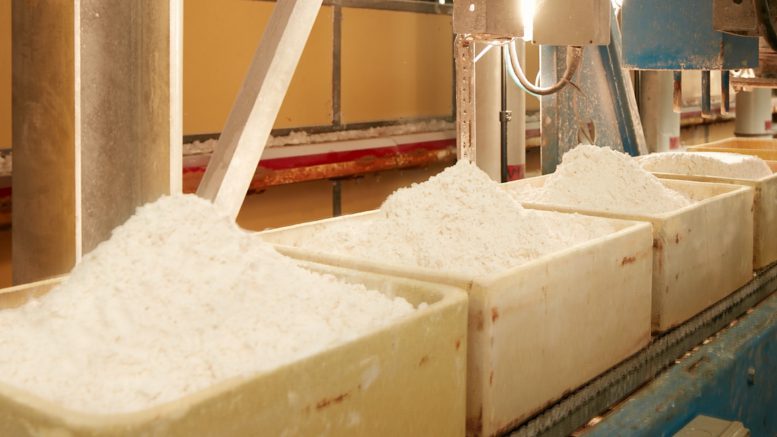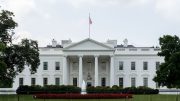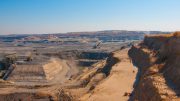Virtually every stock tied to the rare earth group of elements (REE’s) are trading around multi-year lows.
Investor outlook continues to wane despite the commodities key role in neodymium magnet technology, the powerful magnets used in drivetrains for electric vehicles and wind turbines.
REEs are central to the global renewable energy push. But they’re also critical for defence and civilian technologies. Yet the market continues to undervalue this sector.
That’s despite China’s dominance, supplying a hefty 90% of global refined output, according to Reuters. It means the tech products we take for granted in our modern lives remain highly vulnerable to disruption.
It’s an issue set to resurface in the months ahead as U.S. and China relations continue to sour. As I highlighted in the Insider last year, I believed China would start to weaponize its dominance of critical metals in the face of ongoing trade pressures with the U.S.
While that seemed rather outlandish at the time, China has now fired the first shot. In July, the country banned exports of two critical metals germanium and gallium, key components in the production of semiconductors. The decision was widely seen as retaliation against the U.S. as it curbs sales of certain technologies to China.
Bracing for supply disruption
Forget about what government agencies say. To get a real feel for the impending supply problem, focus instead on where capital is flowing.
In June, the world’s largest rare earth supplier (outside China) was gifted a US$258 million windfall from the U.S. Department of Defence to fully fund a new rare earth processing facility in Texas. That was for the Australian owned producer Lynas Rare Earths (ASX: LYC).
It’s a clear response to the germanium and gallium trade shock as the U.S. tries to shore-up domestic supply ahead of any ratcheting up in tensions. No doubt, the Department of Defence knows what it’s doing.
Recent history shows the U.S. tends to lean on the side of confrontation rather than diplomacy. Multi-billion-dollar U.S. defence contractors have interwoven themselves into the economic and political fabric of the world’s largest economy.
As the Guardian reported in 2021, 20 long years of bloody confrontation in the Middle East offered a US$5 trillion gravy train for U.S. defence contractors. It’s why investors should expect more hostility, trade wars, *and* commodity export bans as China attempts to match U.S. gamesmanship.
No doubt, deteriorating diplomacy will rapidly change the outlook for REE stocks that have been stuck in a deep bear market in 2023. While no one wants confrontation, stocks tied to this commodity offer investors a hedge against future instability in financial markets. Events like this will be extremely unsettling for the global economy.
Potential of PSG
Yet there’s perhaps another commodity offering even more upside if trade wars ramp up between the world’s two largest economies: the refined battery anode material known as Purified Spherical Graphite (PSG).
According to a report released by Climate Energy Finance, China supplies a staggering 100% of the global PSG market. That’s an incredibly concentrated risk for lithium-ion battery makers and the global green energy movement more broadly. But it offers enormous opportunities for companies looking to provide alternative supply.
Enter Renascor Resources (ASX: RNU). This South Australian graphite miner is positioned to become the world’s first PSG supplier outside China as it pushes ahead with downstream construction. This is a *key* point that differentiates RNU from most emerging graphite developers. To say this company is setting up for a first mover advantage is an understatement!
As an added benefit, the company’s flagship Siviour resource is the world’s second largest graphite deposit and the largest outside Africa. Thanks to its high grade mineralization and shallow deposit (that trends from surface) the company is able to position itself as one of the world’s lowest cost PSG suppliers.
However, as with any critical metal developer looking to build midstream or downstream capacity, cost of finance remains a steep barrier in the current high interest rate environment. Critical metal processing facilities sit at the edge of technological innovation in the mining industry. That’s why installation is capital intensive and requires specialized staff to construct and operate.
Yet battery makers are in a precarious position in a global environment threatened by trade bans. No doubt, they’ll be keen to see alternatives hit the market. Their business literally hangs in the balance.
It’s these and other institutional investors that will need to step up if they’re looking to guarantee supply in the years ahead. That should give Renascor the edge. Any further pressure from China, and the impetus to push alternative options for this tightly held commodity will grow stronger.
So, the key question remains: which critical mineral will China ban next? Rare earths, PSG or some other commodity we haven’t focussed on here today?
James Cooper is a geologist and mining analyst. Based in Melbourne, he’s now the resident commodities analyst at Fat Tail Investment Research and editor for the Diggers & Drillers Publication. You can follow him on X (Twitter) @JCooperGeo.






Be the first to comment on "Which critical mineral will China ban next?"